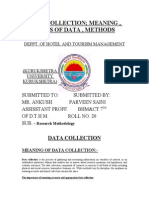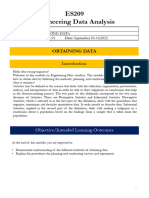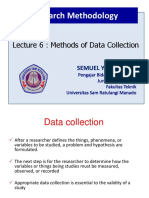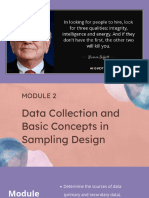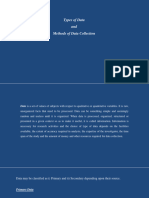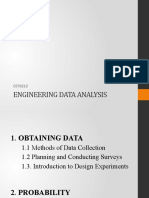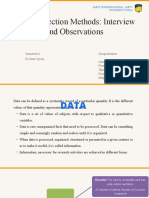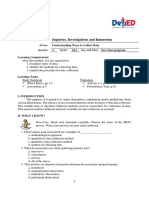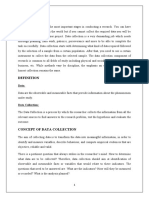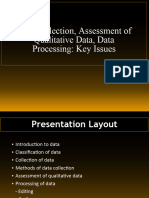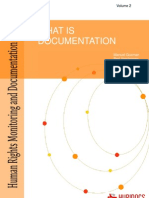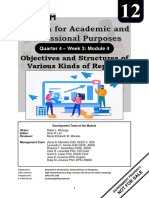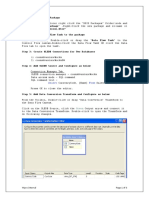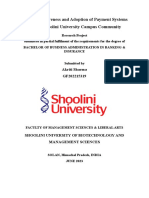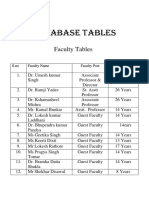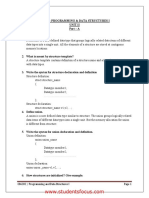0% found this document useful (0 votes)
17 views33 pagesMethod of Data Collection
The document outlines methods of data collection, differentiating between quantitative and qualitative data, as well as primary and secondary data. It details various methods for collecting primary data, including observation, interviews, questionnaires, and schedules, while also discussing their advantages and disadvantages. Additionally, it emphasizes the importance of selecting appropriate methods based on research needs and ensuring data relevance, accuracy, and reliability.
Uploaded by
neelam.mbaCopyright
© © All Rights Reserved
We take content rights seriously. If you suspect this is your content, claim it here.
Available Formats
Download as PPT, PDF, TXT or read online on Scribd
0% found this document useful (0 votes)
17 views33 pagesMethod of Data Collection
The document outlines methods of data collection, differentiating between quantitative and qualitative data, as well as primary and secondary data. It details various methods for collecting primary data, including observation, interviews, questionnaires, and schedules, while also discussing their advantages and disadvantages. Additionally, it emphasizes the importance of selecting appropriate methods based on research needs and ensuring data relevance, accuracy, and reliability.
Uploaded by
neelam.mbaCopyright
© © All Rights Reserved
We take content rights seriously. If you suspect this is your content, claim it here.
Available Formats
Download as PPT, PDF, TXT or read online on Scribd
/ 33




